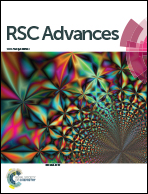Synergistic antibacterial activity of barium doped TiO2 nanoclusters synthesized by microwave processing
Abstract
In this work, we investigated the antibacterial activity of TiO2 and Ba doped TiO2 nanoparticles synthesised by a microwave assisted method. The obtained nanoparticles were characterized by X-ray diffraction (XRD), Fourier transform infrared spectroscopy, ultra-violet visible spectroscopy, energy dispersive X-ray spectroscopy (EDS) and scanning electron microscopy. XRD patterns revealed preferentially oriented (101) TiO2 anatase phase, which changed to anatase–rutile mixed phase after Ba2+ doping. The vibrational spectra show significant shifts in the peaks with Ba addition, indicating the successful incorporation of Ba2+ ions into TiO2. The optical spectra revealed increase in band gap with Ba doping, thereby allowing the delay in recombination rate, favouring antibacterial activity. The surface morphology of TiO2 show spherical shaped grains with increased porosity after Ba doping. EDS analysis confirmed the phase-purity of the synthesized powders. The potential toxicity of nanosized TiO2 and Ba doped TiO2 were investigated using both Gram positive and Gram negative bacteria as test organisms. The antibacterial activity was found to be higher for Ba doped TiO2 nanoparticles compared to pure TiO2 nanoparticles, due to reduced particle size and high specific surface area leading to enhanced particle surface reactivity to light and H2O adsorption.


 Please wait while we load your content...
Please wait while we load your content...